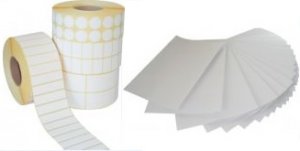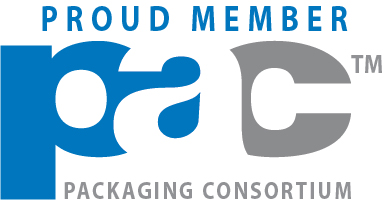How to choose the right adhesive for your labels

Selecting the right adhesive is a balance between the strength of the inital “tack” or “grab”, the final long term strength of adhesion (so the label will not fall off) and the ability to be removed if required. In addition, certain physical environments (eg freezers, book covers) demand special adhesives.
- Permanent adhesives are the most common and are not designed to be removed once initial contact is made. They work on the majority of surfaces but can have difficulty boding to some surfaces such as damp plastics. They are not re-positionable and will leave a residue on casual removal from most surfaces. They are very common and the default adhesive used by the majority of applications. Choose this adhesive if you have no reason not to as it is cost effective and probably does what you want.
- Peelable adhesives are designed to allow the label to be removed, but may leave a residue on the application surface. The long the label is on the surface, the harder it is to remove and the more likely it is to leave a residue.
- Ultra-peel adhesives are the weakest and are useful for marking up high value goods where the label must be very easily removed eg book covers, glass and fine chinaware. The adhesion strength is low though and if used incorrectly they will fall off.
- Freezer adhesives are useful for products that are stored at cold temperatures as convetional permanent adhesives become ineffective below -10 degrees C, and freezers often drop to below -30 degress C
- Marine adhesives can withstand protracted submersion under water and are principally used for chemical labellling
- Security adhesives have various properties that indicate tampering of the label. We have a special security label product called Label lock such tamper evident security label applications.
![]()
Recommendations for applying adhesives
The adhesives on self adhesive labels are sensitive to temperature and moisture, and we recommend that you apply them in accordance with the following conditions:
1) check that the application surface is smooth, clean, dry and free of dust, water, oils, waxes and silicone sprays and is preferably above 10 degrees C. If necessary and appropriate, clean the surface using a little Iso Propyl Alcohol, available as a fluid or convenient disposable wipes from 3M, Intronics or others.
2) Make sure that the storage, application and service temperature / humidity are correct for the adhesive being used. Most correctly stored labels should have a shelf life of 2 years. The most common problems that we face are the label storage temperature being too cool ( less than 10 degrees C) which detrimentally affects the label adhesive. In general, warmer storage and application temperatures give better results.
3) Remember that the adhesive takes at least 24 hours to “set” and gain its full strength. If the label does not stick for any reason, then check conditions in step 1 again as it is most likely that there is a problem with the application surface. 4) Do not clean the labels with any organic solvents, cleaners or anything but a gentle wipe with a damp cloth. The use of organic chemicals may harm the label material, adhesive or print.
| Type of Adhesive | storage temperature(where the labels arestored) | storage humidity(where the labels arestored) | application temperature(where the labels areapplied) | service temperature(where the labels areused after application) |
|---|---|---|---|---|
| Permanent | 15 – 25 degrees C | 44% – 55% RH | +5 – +40 degrees C | -10 – +80 degrees C |
| Peelable | 15 – 25 degrees C | 44% – 55% RH | +5 – +40 degrees C | -10 – +80 degrees C |
| Frost Fix | 15 – 25 degrees C | 44% – 55% RH | -20 – +40 degrees C | -40 – +60 degrees C |
| Ultra Permanent | 15 – 25 degrees C | 44% – 55% RH | +5 – +40 degrees C | -10 – +80 degrees C |
Recommendations on how to remove self adhesive labels & sticker residue
Many people are frustrated by the unsightly mess left behind when you remove self adhesive labels. To remove this sticky label residue try these tips:
1) First Steps In Label Removal
The easiest way to remove a label initially is to warm up the label with a warm air hair dryer (to “melt” the adhesive) and peel it off slowly, taking your time. In most cases, the label will remove completely intact with no residue. Try removing any remaining residue with a strong adhesive cellotape.
2) Alternative Label Removal
Alternatively, soak the label in warm water for 10 minutes, as most labels use water based acrylic adhesives, and heat and water can help the removal process. Label adhesive can often then be rubbed off with your fingers similar by rolling it into balls.
3) Label Removal Using Chemicals
If you wish to try using chemicals (particularly with paper labels), soaking the label with solvents such as such as vinegar, cigarette lighter fluid, white spirit or WD40 can help the removal process as it may soften the adhesive and enable the label to be peeled off cleanly. Whatever method you use, test beforehand on an unseen section of the surface to make sure that the solvent will not damage the surface. Covering the adhesive residue with flour before applying a solvent can sometimes help.
If there is a residue left, try rubbing the residue with a little isopropyl alcohol (or methylated spirits if you dont have any IPA – if desperate try vodka!) on a cloth to dissolve the adhesive. Again, test a small unseen area beforehand.
Last Resort To Removing Labels
Finally, as a last resort, a stronger organic solvent such as acetone (similar to nail varnish remover) could be used, but will probably mark many plastic or coated surfaces permanently . Commercial citrus based removal products do exist, such as “Goo gone” (available on Amazon.co.uk )but these are often not found around the house.
Customer Tips For Removing Sticky Labels and Residue
“These labels can be stubborn, but I found that if you put a little cooking oil on your finger(s) and keep rubbing it on the label, the paper will roll off and the adhesive will “melt”.”
“To remove waterproof labels from a jar, fill the jar with boiling water and leave to stand for a couple of minutes. Peel off the label slowly. Most if not all the adhesive will come off with it. If there is any residue, remove it with steel wool and cooking oil. – Andrew Shakespeare, Proprietor, Caerphilly Preserves”



